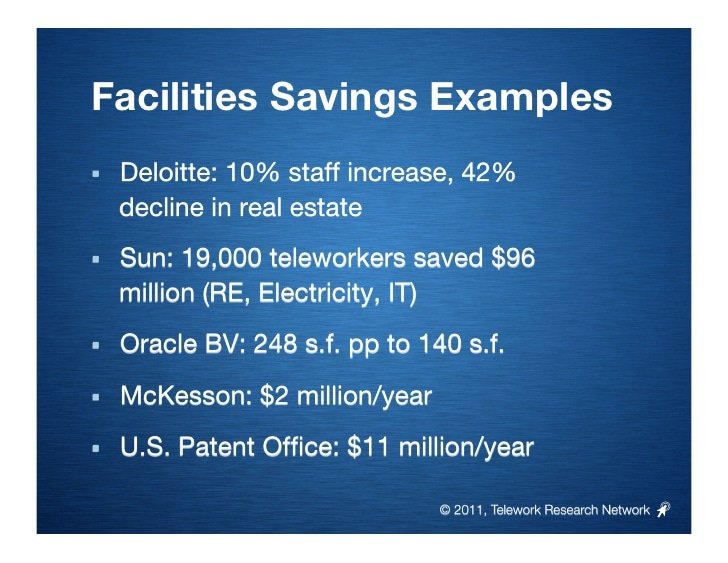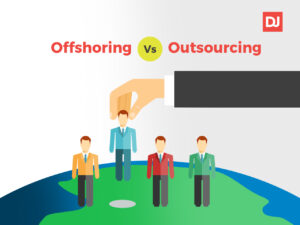Did you read our previous article, 11 Ways Your Company Can Save Money Hiring Remote Workers? In it, we discussed how easy it is to grow your bottom line by letting your employees work from home. And it’s easy to hire great people – just contact us.
The brilliant thing about remote work is the cyclical benefits you can expect. Once your employees work from home, you’d certainly not need an office (or at least can operate from a much smaller space). Much of the office related costs go away with it.
But benefits aren’t necessarily just all about the numbers (although that’s a critical part of it). There are benefits that might be just as important to your ROI, but perhaps it wouldn’t be as easy to quantify them – such as, an elevation of your brand image or amplification of your corporate citizenship.
Let’s take a look at some more amazing savings waiting for you, should you decide to embrace remote work for your business.
- Do away with expensive office real estate – One of the most expensive parts of running an office is the office itself. Or rather the hottest commodity – real estate. The picture below gives you the per square foot rate in major US states. If you’re renting, it can cost you at least $1.74 to more than $6.16 per square foot per employee. On the higher end that averages $14,800 per employee per year. But let’s say you have a budget for real estate and want to stick to it no matter what and that budget is $5000. Then, check out this infographic to find out how much office space you get for your buck. Downright measly, isn’t it? What if you could do away with this cost entirely? Remote work makes that a possibility.

Image Source: Statista
- No office means no office utility bills – Regardless of the size of your business, chances are you’ll need water, heating, electricity, trash/recycling and Wi-Fi. For old time’s sake, you might even need landline telephones. In the Mid-Atlantic region, the average monthly electricity bill for offices is $722.
- Paying for a commercial parking lot is no picnic – If no one is coming to the office, you certainly won’t be needing that parking lot. In fact, you won’t be needing to use other common areas either. Hallways, elevators, bathrooms, stairways, mowed lawns – none of that stuff is on you. Monthly common area maintenance fees may be included in your lease. But depending on your contract, you could have to pay for significant changes – like fixing the windows of the building. Even if the cost is split amongst all the tenants, you could have to fence a bill of $5000 out of nowhere – crippling for a small business owner.
- Eliminate your office-related operating costs – From computer and printers to the salaries of non-income related employees (such as janitorial and maintenance staff) to office lunches, every business has a flurry of overhead costs. Although for small companies most of these costs are tax deductible, the expenses remain. Your operating expense ratio (OER) could be anywhere from 60% to 80% of your income. By working remotely, your operational costs won’t go away entirely but it should be significantly less. Even if you were able to reduce your OER by a third of its current rate, your business’ income would go up quite a bit.

Image Source: Telework Research Network
- Expect a significant reduction of business taxes – Small businesses, much like any other entity, are subjected to a myriad of taxes. But as a remote business, one crucial tax – the business property tax, which is estimated by the property’s value – goes away. Plus, the portion of your home you use as your office also becomes tax deductible. You also get to save on excise tax if you’re not commuting.
- Increase your business’ scalability with the least expenses – As your business grows, if you take the traditional path, you’ll need to rent a bigger space or buy more expensive new property. You’ll also incur all the additional costs that come with it, from construction to more maintenance and security to more office equipment. All of this will cut into your profits for years. It’s almost as if the universe is punishing you for succeeding. The path of least resistance when it comes to expanding your business is remote work. There is no bound to how many people can work for you online. And other than paying to add them to your remote project management software, you won’t have to bother with extra costs.
Benefits of Remote Work That Bolster Your Business’ Corporate Conscience
Small or large, CSR is an essential part of any organization today. You may not be able to chalk remote work as a part of your CSR campaign, but it can undoubtedly amplify your corporate conscience. And that in turn can enhance your image as a forward-thinking company and draw better talent and business partners to you. According to 2018 Robert Half Technology Salary Guide, the most common perk offered is flexible work schedule (62%) and telecommuting (34%).
- Remote work boosts local economies and builds stronger communities – Once you’re not limited to hiring locally, or your employees are no longer under the duress of a commute, many delightful things unfold. You can hire qualified candidates from rural or suburban communities. These candidates then become bona fide local taxpayers and will most likely spend a portion of their income patronizing local businesses and therefore, boost the economy. Eliminating commute also means that remote workers are under no pressure to migrate from small hometowns to already-overcrowded metros. This also leads to the growth and development of rural communities.

Image Source: Telework Research Network
- Remote work is good for the planet – Fewer people commuting daily will have a direct positive impact on the planet by reducing petroleum consumptions, greenhouse gases, traffic, and road depreciation. According to the TRN, removing one car from the highway leads to a three-time reduction in traffic congestion. Equally as impressive is the ripple effect of telecommuting. Less usage of paper, for instance, could lead to saving 13 million trees, reduce waste by 44,000 garbage trucks, and reduce emissions equivalent to 279,000 cars!
- Enjoy many unquantifiable benefits – Not all benefits employers will enjoy as a result of remote work can be reduced to numbers. These factors can go a long way in improving a company’s ROI. Taken from the 2017 State of Telecommuting in the US Employee Workforce, these unquantifiable benefits include the following:
- Expand labor pool and reduce talent/labor gaps
- Optimize space utilization
- Enhance organizational agility
- Reduce travel time to and from meetings
- Increase employee engagement
- Reduce the cost of technology
- Lower employee stress
- Reduce work/life conflict
- Slow the brain drain
- Enhance creativity and innovation
- Focus on employee results vs. presence
- Reduce paper usage and the associated storage space
- Expand without increasing their geographic footprint
- Lower or eliminate parking and transit subsidies
- Avoid environmental penalties and compliance costs
- Become a “best place to work.”
- Solve parking availability problems
- Enhance the corporate image
Whether it be quantifiable savings or a push to make your company more socially conscious, it is high time your company charted the remote work route. If you think that it might be a trend that will pass or it seems like a good plan for large corporations, but not for small- or mid-sized businesses, you’d be wrong. The 2017 State of Telecommuting in the U.S. Employee Workforce states that there is a 75% increase in telecommuting among mid-sized companies since 2010. And they are offering it more as a full-time option (8%) than part-time (2%).
All the stats you’ve come across above and in our previous article (link) speaks of what’s happening here and now, and your peers are benefiting from this change. What are you waiting for? Give DistantJob a buzz and let’s get started.





